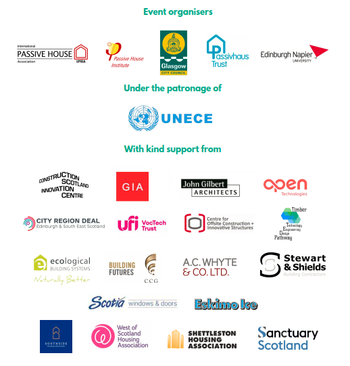Ice Box Challenge Glasgow
Better building design can help us reduce our carbon pollution without changing our behaviour. Buildings that prioritise efficiency first are comfortable and healthy… The #IceBoxChallengeGlasgow put that theory into practice in a fun and interactive experiment, taking place from July 23 to August 6!

Illustration :
The #IceBoxChallenge is a contest and an experiment to demonstrate how a building can be super energy efficient and comfortable. #IceBoxChallengeGlasgow presents one box built to Scottish Building Standards and another to the Passive House Standard. The boxes shall be left outside for two weeks, each holding an equal amount of ice. When opened, the amount of ice left in each box will be measured. How much ice remains will demonstrate how well each icebox keeps out the heat.

What is the Ice Box Challenge?
The Ice Box Challenge is a scientific demonstration, visually highlighting the benefits of energy-efficient buildings. After a successful student competition, a jury selected the winning design, submitted by Robert Gordon University. In preparation for the event, two boxes have been built – one according to the Scottish Building Standard and the other to the highly energy-efficiency Passive House Standard. Both boxes will then be filled with an equal amount of ice and displayed for public viewing in St Enoch Square for two weeks. The amount of ice left in each box at the end of this period will be measured, with a winning prize for the candidate who guessed right the amount of ice remaining.
About the event
The opening ceremony is taking place on July 23 at St Enoch Square at 12.30 PM and the closing ceremony will take place on August 6 at 1 PM. This will include declaring the winner of the ‘Guess the remaining ice level’ competition, who will receive a weekend stay in a UK Passive House B&B. The competition will run from July 23 to August 1 via the Ice Box Challenge website. There are also Passive House prize packs to be won.
Passive House is an international, public, performance-based building standard for all types of buildings, in any climate, developed by the Passive House institute in 1996. Passive House buildings are highly energy-efficient, predominantly using passive heat sources such as the sun’s rays and heat from the occupants and their technical devices to stay warm in the winter. During the warmer months, strategic, passive cooling techniques such as night ventilation and shading keep Passive House buildings comfortably cool. The substantially reduces the need for active heating and cooling.
#EfficiencyFirst and COP26
The Ice Box Challenge is part of the International Passive House Association’s 2021 awareness-raising campaign “Efficiency: The first Renewable Energy”. The campaign emphasises the foundational role an efficiency first approach plays in any building project, as embodied or upfront carbon reductions are at risk of being overwhelmed by operating emissions over the building’s lifecycle.
With this public display, the group hope to raise awareness for the vital role energy efficiency in buildings plays in meeting our climate goals in the run-up to the UN Climate Change Conference, COP26, this coming November.
Find more information about the event on the official website.






